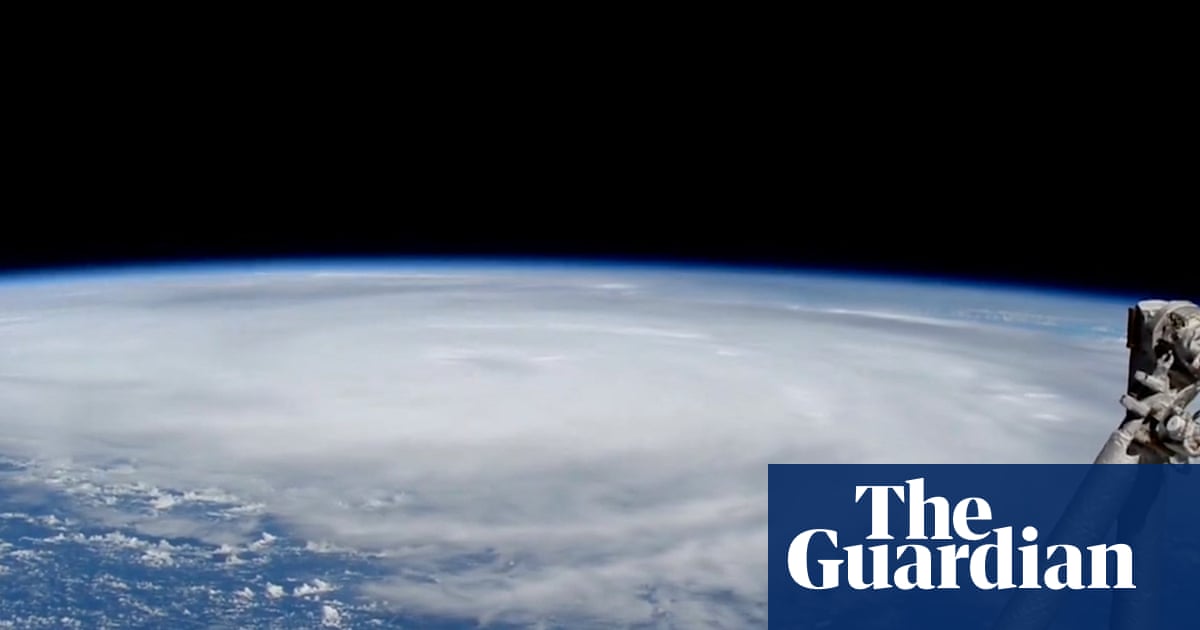Hurricane Helene made landfall along the Florida coast on Thursday night as a powerful and potentially disastrous category 4 storm, bringing chaos to a wide swathe of the Gulf coast and threatening high winds, storm surges and drenching rainfall.
Helene was located about 70km east-southeast of Tallahassee, Florida, with maximum sustained winds of 225 kph, the Miami-based UA National Hurricane Center said late on Thursday.
The huge storm formed rapidly this week and strengthened as it careened across the warm waters of the Gulf gathering speed.
Helene’s storm surge – the wall of seawater pushed on land by hurricane-force winds – could rise to as much as 20ft (6.1 meters) in some spots.
“This is not a survivable event for those in coastal or low-lying areas,” said Jared Miller, the sheriff of Wakulla county on the Florida coast. “Please heed the evacuation orders in place as time is running out to do so.”
States of emergency have been declared in Florida, Georgia, the Carolinas, Virginia and Alabama.
Florida’s governor Ron DeSantis had urged north Florida residents to flee before time runs out, warning of flooding, road closures and power outages. Though the storm is expected to weaken once it makes landfall, it is moving fast and could continue to spread.
“You’re going to have hurricane force winds for probably 50 miles outside the eye of the storm, and then you’re going to continue to see surge, particularly in that Big Bend area,” DeSantis said at a news briefing on Thursday evening, held at the state’s emergency operation center in Tallahassee.
John Dailey, the mayor of Tallahassee, Florida’s capital city that is in the direct path of Helene, said the hurricane could be the strongest storm to ever make a direct hit on his city. Helene could produce “unprecedented damage like nothing we have ever experienced before as a community,” Dailey told reporters on Wednesday.
Climate scientists have warned that global heating is increasing the numbers and strengths of powerful hurricanes. While no individual storm is down to climate change, the new pattern of more and stronger hurricanes is powered by the planet’s warning oceans and seas. Much of Helen’s power came from the strength it gathered over the Gulf of Mexico, which has reached unprecedented high temperatures in recent years.
Helene is forecast to be one of the largest storms in years to hit the region, Phil Klotzbach, a Colorado State University hurricane researcher, told the Associated Press. He said since 1988, only three Gulf hurricanes were bigger than Helene’s predicted size: 2017’s Irma, 2005’s Wilma and 1995’s Opal.
Parts of Florida were already feeling the storm’s impact before it made landfall. In communities like Fort Myers Beach, Florida, the water was already 2ft above normal earlier on Thursday. Cities such as Tampa and St Petersburg saw storm surges of 5ft by Thursday evening.
The hurricane is expected to travel up the south-eastern coast once it makes landfall, moving from Florida up to North Carolina. At least 50 million people are under hurricane and tropical storm warnings.
As night fell in the North Carolina mountains, emergency officials asked residents to seek safety on higher ground as Hurricane Helene neared land. The area has already been hit by heavy rain from another storm and forecasters predicted an additional 9in to 14in of rain could fall as what remains of Helene moves across the area on Thursday night and into Friday.
“A storm like this, we’re seeing flooding where we have never seen it before,” said Jimmy Brissie, the emergency services director for Henderson county south of Asheville.
Helene knocked out power in western Cuba as it brushed past the island, affecting about 160,000 customers in the province of Artemisa and another 70,000 in the neighboring province of Pinar del Río. The hurricane also forced about 800 people in the region to evacuate flood-prone zones, according to Guerrillero, a local newspaper.
The storm swamped parts of Mexico’s Yucatan Peninsula on Wednesday, flooding streets and toppling trees as it passed offshore and brushed the resort city of Cancún.
Helene is the eighth named storm of the Atlantic hurricane season, which began in June. The National Oceanic and Atmospheric Administration (Noaa) has predicted an above-average Atlantic hurricane season this year because of record-warm ocean temperatures.
Reuters and the Associated Press contributed to this report

